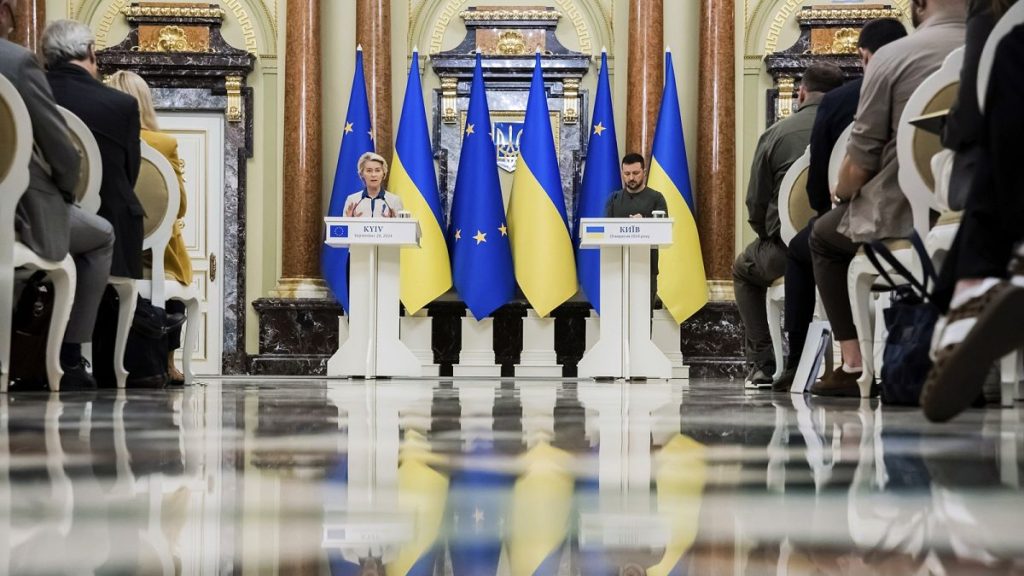The European Union has pledged a €35 billion loan to Ukraine to assist with the financial burden caused by Russia’s ongoing invasion. This loan is unique in that it will be secured by Russia’s frozen assets, specifically the windfall profits generated by these assets. This collateral will ensure that Ukraine’s budget is not burdened by the repayment of the loan, allowing the government to focus on essential needs such as healthcare, defense, and infrastructure repair. The initiative to leverage Russia’s immobilized assets for the benefit of Ukraine was born out of the need to hold Russia accountable for the devastation caused by their invasion.
The idea of using Russia’s frozen assets to support Ukraine originated from the concept of making Russia pay for the costs of the war. These assets, primarily held in EU territory, generate significant annual revenues that can be used to support Ukraine’s army and reconstruction efforts. The EU’s decision to contribute €35 billion to the G7’s $50 billion loan plan was made in response to concerns about potential financial risks. By providing a larger share of the loan, the EU aims to encourage Washington and other allies to expedite the approval process. This loan is crucial for Ukraine as it faces a dire situation exacerbated by ongoing Russian aggression.
The allocation of the windfall profits generated by Russia’s frozen assets will be managed through the Ukraine Loan Cooperation Mechanism. This mechanism will ensure that allies who contribute to the loan can access these profits to cover repayments, relieving both the G7 countries and Ukraine from the burden of repayment. The disbursement of the loan is expected to occur in 2025, with the funds being transferred to Ukraine in either gradual installments or a lump sum payment. The flexibility and autonomy granted to Ukraine in the use of this financial assistance allow the government to address urgent needs, including the purchase of weapons for the Ukrainian army.
The proposal to extend the renewal period on Russia’s frozen assets from six to 36 months aims to enhance predictability and address concerns about potential veto threats. Hungary’s veto power on these assets, regardless of the renewal period, remains a significant factor in the decision-making process. While the €35 billion loan is not directly impacted by Hungary’s veto, the extension of the renewal period could provide greater stability and certainty for the allocation of funds. The negotiation and approval process for this extension will require unanimity among EU member states, highlighting the importance of political consensus in addressing complex financial issues.
The EU’s timeline for raising the €35 billion loan is expedited, with a goal of finalizing the process by the end of the year. The Council and the European Parliament are expected to move swiftly to approve the loan, bypassing individual vetoes through a qualified majority vote. Despite potential challenges posed by Hungary’s veto power, the EU remains committed to supporting Ukraine and holding Russia accountable for its actions. The ongoing collaboration with G7 allies and the proposed mechanisms for managing frozen assets demonstrate a comprehensive approach to addressing the financial implications of the conflict in Ukraine. The EU’s common budget serves as an additional safeguard against any unforeseen disruptions in the repayment process, ensuring the continued flow of financial support to Ukraine.


